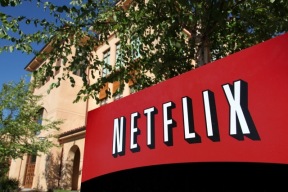Last week at CES, Netflix announced that a number of ISPs had adopted its Open Connect technology, which provides a more direct connection between it and a cable operator, lowering the cost of delivery and increasing the quality of its streaming video. And for those who do participate, Netflix has a bonus: Due to those efficiencies, it will be able to offer up Super HD and 3D video to their broadband subscribers.
But here’s the flip side: One cable provider is arguing that because Netflix isn’t offering it Super HD or 3D content, that it is essentially discriminating against ISPs based on whether they deploy Open Connect boxes. Time Warner Cable sent a statement to Multichannel News which reads:
“While they call it ‘Open Connect,’ Netflix is actually closing off access to some of its content while seeking unprecedented preferential treatment from ISPs… We believe it is wrong for Netflix to withhold any content formats from our subscribers and the subscribers of many other ISPs. Time Warner Cable’s network is more than capable of delivering this content to Netflix subscribers today.”
Forgetting the irony of a cable provider for preferential treatment of the services it provides over their network, here’s the real punchline to this story. If Netflix weren’t witholding Super HD content, Time Warner Cable would likely be crying foul over how the streams its subscribers generate were choking its network and slowing down data connections for everyone. It’s true — Time Warner Cable can deliver that content today, but in doing so, it would be creating incredible strain on network peering points, and it would drive up Netflix’s CDN costs.
The whole point of Netflix’s Open Connect is to relieve that strain and to make delivery of high-quality video more efficient for all parties involved. And doing so makes ultra high-quality and 3D video delivery more affordable and actually kind of tenable. In that sense, providing access to providers who are willing to directly peer with Netflix and cache locally only makes sense.
But making sense doesn’t always count when you’re an incumbent video provider and you have a smaller competitor nipping at your heels with a lower-priced offering. Netflix already takes up about a quarter of all peak downstream traffic.
Even so, Netflix can’t match the quality that can be delivered via coax — not over IP — and Time Warner Cable and other incumbent providers have little incentive to enable it to do so. By installing Open Connect boxes free of charge and peering with Netflix, cable companies would basically be giving it the tools to also offer comparable picture quality. But why would they?
Meanwhile, some cable providers — most notably Comcast — have used their last-mile connections as a competitive advantage against streaming video services. At a time where data caps loom large, Comcast enabled its streaming video service delivered via Xbox game consoles to operate without counting against those caps. Not so for Netflix, Hulu, or other streaming services available via Xbox.
Time Warner Cable isn’t Comcast. And one of the reasons that this fight with Netflix is especially surprising is that, unlike Comcast, Time Warner Cable has been pretty straightforward about leading with its broadband services rather than its video services. It recognizes that in the future one of its key differentiators will be its ability to quickly deliver Internet services — including streaming video services — to its subscribers.
If Time Warner Cable were really serious about that, it would work with Netflix on making its delivery better. Instead, it’s blaming Netflix for not clogging its network further.
